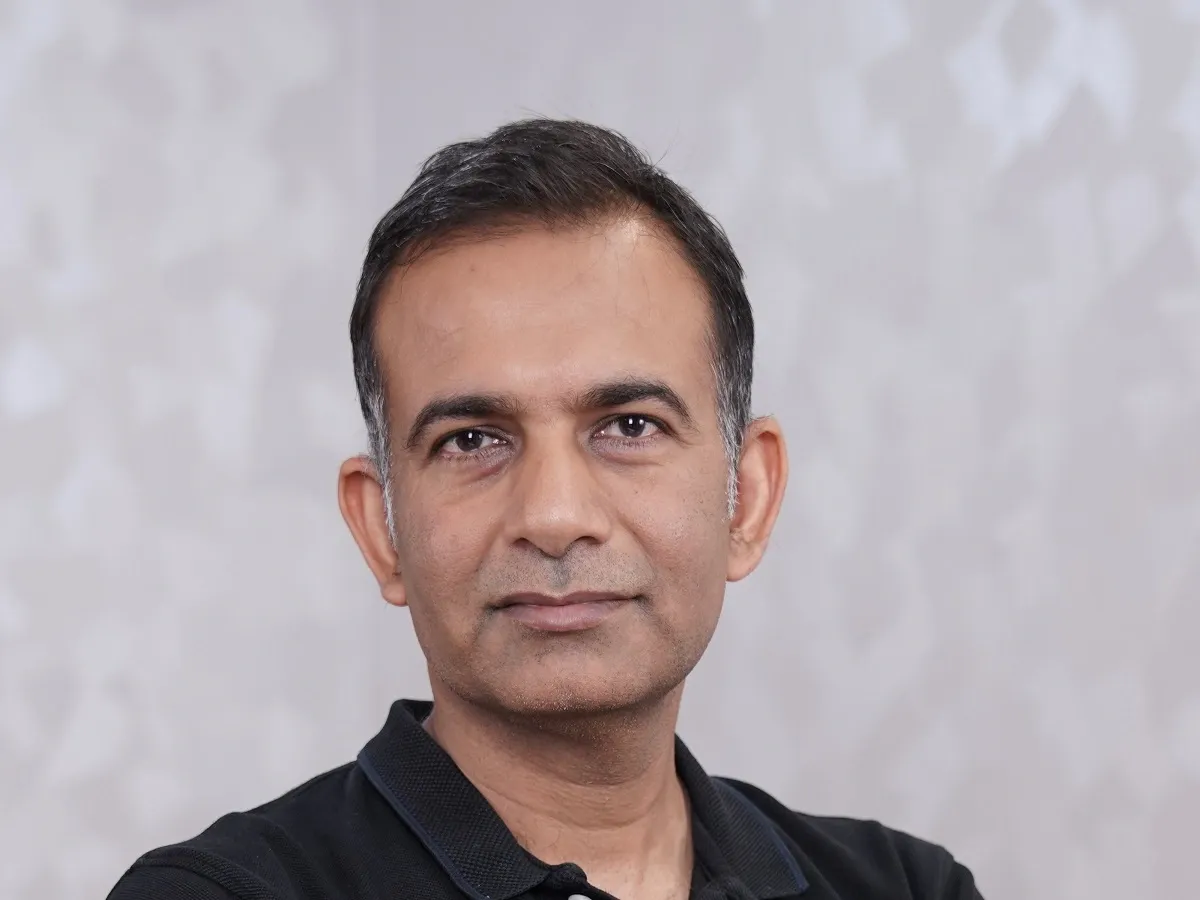Market News
Small- and mid-cap firms are becoming investor favourites: Kush Gupta, Director at SKG Investment & Advisory

13 min read | Updated on August 29, 2025, 12:31 IST
SUMMARY
Stock market investment: The expert says that a big change has come in the pattern of investing. Value seekers are comfortable with taking risks and investing in companies that are in their early stages of growth.

"India is a big country, and it needs to expand its exports; we can’t rely on select markets for our goods and to attract investments," Gupta opines.
I think the last few days have seen a string of positive news, which, quite frankly, was much needed since the US trade tariff wars began. These developments were met with a lot of optimism. I would say the GST 2.0 reforms were most crucial amongst them. It was done with the intent of easing the process of doing business in the country and promoting commerce. Such measures have a lasting impact, and they send a crucial message that improving the business landscape is on the government’s agenda.
While the tensions related to the US are a separate issue and this won’t entirely offset that, India’s ratings upgrade and improved relations with China do help in building confidence in the investor community.
India is a big country, and it needs to expand its exports; we can’t rely on select markets for our goods and to attract investments. Improved relations with China will reduce trade dependency, and a ratings upgrade will make India a preferred destination across the world. It may seem small now, but gradually these incidents will become stepping stones for being self-reliant.
The IPO market has been the talk of the town lately. 2024 was the biggest year for primary issues, and this year looks equally busy. Indian companies raised a staggering $19.5 billion in capital last year, and most investors made a lot of money through these listings. While a robust IPO market indicates a strong and confident investor sentiment, one has to watch out for pitfalls.
Some IPOs, like Arunaya Organics and Mahindra Realtors products, saw significant listing day losses in the SME segment. On the main board, Citichem India, Laxmi India Finance and Arisinfra declined from their IPO price at the time of listing.
Investors should be careful of the high valuations at the time of listing. A lot of companies get pressurised from their VC/PE investors to inflate the IPO price to improve their own performance. In certain cases, new-age businesses fail to meet market expectations of delivering consistent profits.
Investors should look deeper into the financial stability, growth outlook, business models and market sentiment before making a decision. Most importantly, don’t get FOMO – fear of missing out. One thing is certain: the stock market will always present opportunities to invest in sound companies.
Every investment manager has a different approach in picking stocks; here are the key factors that determine my decisions.
Once identified, I always try to ascertain the probability of these drivers and how likely they will materialise. Usually I stay away from companies that require large capex for their growth because that leads to a longer gestation period and higher capital risk.
They include situations like industry disruption, sudden economic slowdown, tariff barriers if the company in question is heavy on exports, technology shifts, up and down cycles, etc.
While very few companies can sustain sudden changes and continue to grow, we try to see maximum drawdown and the ability to at least grow at a normal pace while navigating through disruptions.
I think the Indian economy’s story is very unique and is charting its own path. The demographic dividend, infrastructure growth, neutral geopolitical stance and focus on self-sustainability have created a structure where growth drivers may change from time to time, but the growth itself will continue in one form or another.
We have various sectors like IT, FMCG, Telecom, Financial Services, Infra and many more that are continuing to grow in spite of all the tariff wars and slowdown in certain other sectors. In light of the current scenario, I think more new-age companies will drive the economy. Where the traditional IT firms may fail, AI- and data-led new IT companies will start staking claim.
Where legacy FMCG companies are struggling, direct-to-consumer (D2C) players leveraging digital platforms for rapid growth will take their place.
If you put sectors aside, a big change has come in the pattern of investing. Small- and mid-cap companies are now becoming investor favourites. Value seekers are comfortable with taking risks and investing in companies that are in their early stages of growth. This is having a very positive impact on the Indian economy, where SMEs have been the backbone and primary driver of commerce.
My reading is that while certain areas are affected, there are enough high-growth companies and sectors that will either replace the older ones or create their own markets, giving ample opportunities to investors.
From a medium- to long-term view, I think Infra, BFSI and Consumer Durables will do really well. There is a sustained rise in consumption spending, and in the near term, easing inflation and proactive monetary policy are expected to further fuel consumption spending.
By 2030, the country is expected to add around 75 million middle-income class and 25 million rich and affluent households. This demographic shift will position India as one of the fastest-growing consumer markets globally.
On the infra side, the Modi government has been pushing policies since coming into power to ensure that the country is well connected; essential infrastructural developments in power, airports, roads, etc. are being focused on.
We are still a long way from being sufficient, so I expect growth here as well in the long term. The Indian economy has gotten a big push through financial inclusion. Consider this: almost 30% of holdings across major mutual funds are in the BFSI sector.
With a large young population that is eager to invest, save, take insurance, use digital payments, and take loans, we expect this sector to continue its growth for the next 5-7 years.
Even now, there are only 200 million demat accounts in India; that is only 13% of the total population. In the USA, over 50% of individuals own a piece of the stock market. So there is a lot of headroom to grow in India.
I am very positive about the telecom sector. If you look deeper, the telecom sector is no longer about facilitating communication like it was a decade ago.
With data and its applications, it has now morphed into a multi-functioning sector that facilitates the growth of other sectors like entertainment and finance.
There is almost nothing that moves without data now, from critical infra to everyday consumption through online platforms.
Data is driving our lives, and telecom companies will continue to enjoy this monopoly. Further, with an increase in 5G adoption and Jio announcing its plans for 6G expansion, telecom should continue its robust growth as the country gets connectivity in the remotest corners.
The average revenue per user (ARPU) has been on a steady rise, increasing profits and demand. On the threat side, it is important to note that telecom companies are required to invest a lot in capacity building to keep up with the technology. If growth is not sustained, then capex can eat into the profits over a period of time.
Additionally, past investments in now obsolete tech hardware like 2G and 3G are redundant, which makes it difficult to justify future investments in tech that will also be replaced soon. So, the rapid changes in industry can hurt profits and make it difficult for companies to keep up with them.
The best way to invest in gold is through ETFs (exchange-traded funds) and gold mutual funds. Both these instruments have negligible management fees, complete transparency and liquidity.
Earlier, investors would use the MCX platform and buy future contracts of gold as investments. That was very complicated, as one had to roll over the contracts every month to stay invested and pay brokerage and the price difference. Also, the margin money calculations were a little complicated to understand. With most AMCs launching their gold mutual funds, it has become very easy to invest in gold.
As a diversification, I think gold plays an important role, especially in today’s environment where global tensions are high and major economies like the US, China and the EU are looking inwards.
Gold continues to be the reserve currency across the world and a safe hedge against stock market volatility. We expect it to give an 11-12% annualised return in the next 18-24 months.
Post COVID, investor behaviour is one of my favourite topics of discussion. Having spent almost 20 years in the industry, the drastic change in the investment landscape after 2020 was unexpected both in behaviour and its speed.
The post-COVID time period has seen a sudden shift in demographics... The stock market started attracting eager investors in the age bracket of 25-40. These were first-time savers; they had seen their older generation dabble in stocks, and that too very carefully. Motivated by passive income, financial literacy and a higher risk-taking appetite, they started investing, expanding the market.
Today, the average age of Indian demat account holders is 32; it was 38 in 2018. Investors under 30 make up 40% of the total registered investor base.
While their investable funds may be smaller, they provide breadth to the market in a way that was never witnessed before. Other changes include the IPO rush, fuelled by increasing demand; companies going public now find it very easy to raise funds. Most IPOs are oversubscribed within days, and listings have been profitable too for the investors.
The unlisted space, which was relatively insignificant before 2020, has now become a market on its own merits. For a company looking to go public, it is very normal to participate in the unlisted or so-called pre-IPO market with plenty of takers and follow that up with an IPO.
On the cautionary side, I feel post-COVID, investors’ expectations from the stock market have become unrealistic. Having seen a one-way growth trend and consistent returns from conservative instruments like mutual funds, first-time investors tend to think that an 18-20% return is a norm in the equity world without realising the risks involved. This leads to valuation bubbles, risky bets and investing in assets that are not fully understood.
To conclude, I think the changes have been more for the good; industry has expanded, and both the demand and supply sides are more active now, which is a sign of a healthy financial market.
Investments in the securities market are subject to market risk. Read all the related documents carefully before investing. The stock or sector discussed here is only for educational purposes and is not a buy/sell recommendation. Investors are advised to conduct their own analysis and risk due diligence before trading and investing in the stock market.
Related News
About The Author
Next Story



